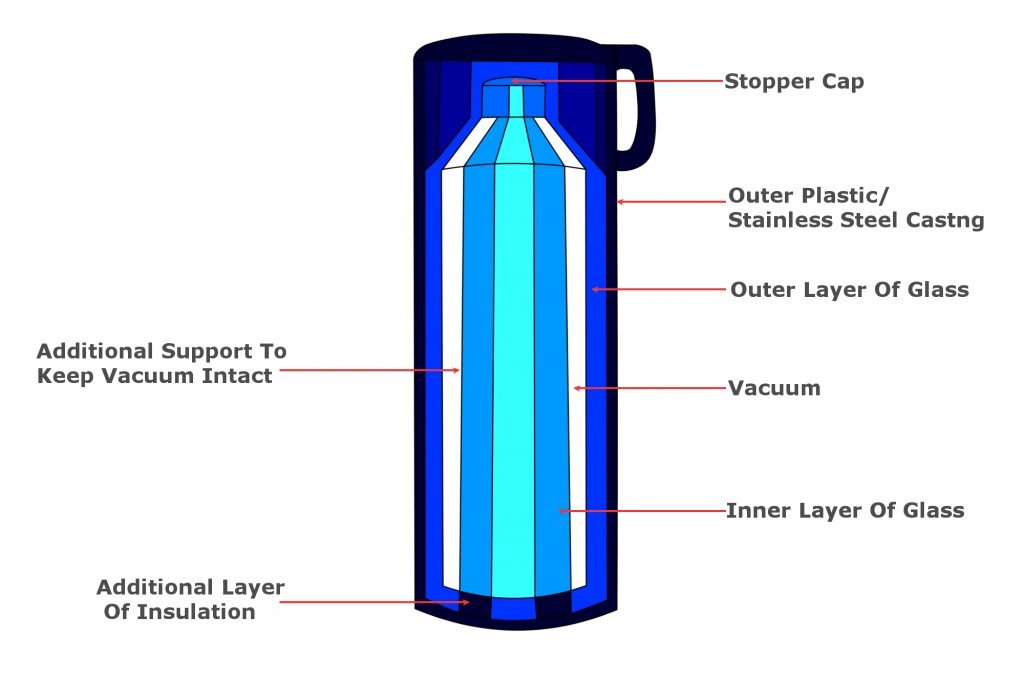The vacuum flask consists of two vessels, one placed within the other and joined at the neck. The gap between the two vessels is partially evacuated of air, creating a partial-vacuum which reduces heat conduction or convection. Heat transfer by thermal radiation may be minimized by silvering flask surfaces facing the gap but can become problematic if the flask's contents or surroundings are very hot; hence vacuum flasks usually hold contents below the boiling point of water. Most heat transfer occurs through the neck and opening of the flask, where there is no vacuum. Vacuum flasks are usually made of metal, borosilicate glass, foam or plastic and have their opening stoppered with cork or polyethylene plastic. Vacuum flasks are often used as insulated shipping containers. Extremely large or long vacuum flasks sometimes cannot fully support the inner flask from the neck alone, so additional support is provided by spacers between the interior and exterior shell. These spacers act as a thermal bridge and partially reduce the insulating properties of the flask around the area where the spacer contacts the interior surface. Several technological applications, such as NMR and MRI machines, rely on the use of double vacuum flasks. These flasks have two vacuum sections. The inner flask contains liquid helium and the outer flask contains liquid nitrogen, with one vacuum section in between. The loss of precious helium is limited in this way. Other improvements to the vacuum flask include the vapour-cooled radiation shield and the vapour-cooled neck,[5] both of which help to reduce evaporation from the flask.


